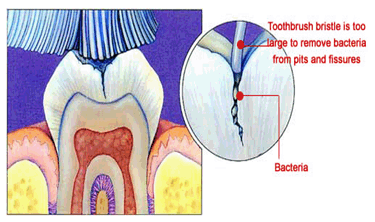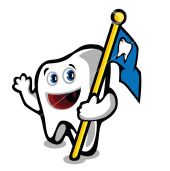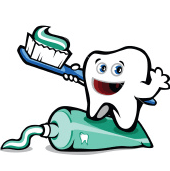Dental Problems | Kids Kare Korner | Regular Checkups
 For our younger patients routine dental checkups should start at around 2 years of age. Starting at an early age allows familiarization of the dental clinic environment. More than 1 in 4 children in the United States have cavities by the time they are 4 years old, sometimes as early as age 2. To prevent early childhood cavities, parents first have to find out their child's risk of developing cavities, then learn how to manage diet, hygiene and fluoride to prevent problems before they start.
For our younger patients routine dental checkups should start at around 2 years of age. Starting at an early age allows familiarization of the dental clinic environment. More than 1 in 4 children in the United States have cavities by the time they are 4 years old, sometimes as early as age 2. To prevent early childhood cavities, parents first have to find out their child's risk of developing cavities, then learn how to manage diet, hygiene and fluoride to prevent problems before they start.
By taking their child to the dentist early, parents learn how to care for their child's teeth. Children, in turn, learn the importance of good oral health care and view visiting the dentist as a positive experience.
Sealants...Groovy Adherents
The pits and grooves of your teeth are prime areas for opportunistic decay. Even with frequent brushing, one can sometimes miss the tiny particles of food caught in the grooves of the chewing surfaces of your teeth. Sealants are liquid plastic coatings that are designed to prevent the intrusion of bacteria and other debris into the deep crevices on the top surfaces of your teeth.

Sealants are usually applied to children's teeth as a preventative measure during the years of most likely tooth decay. However, some adults with a high risk of decay can benefit from sealants as well.
Sealants are applied by first cleaning the tooth surface. The procedure is followed by "etching" the tooth with an abrasive substance, which allows the sealant to better adhere. After the sealant is applied, a warm light source is directed to the site to promote faster drying. Sealants usually need re-application every three to five years.



Fluoride...Your Cavity Fighter
Fluoride is a mineral occurring naturally in all water sources that protects tooth enamel. A truly powerful weapon in the battle against tooth decay, fluoride has been shown to:
In fact, studies have shown that children who drink fluoridated water from birth have 40%-60% fewer cavities than those who don't!
Working to reduce decay
Fluoride works in two ways -- topically and systemically.
Topical fluoride is used to strengthen the teeth that have already erupted in the mouth. As the fluoride washes over the tooth, it is intergrated into the outer surface of the tooth, making it more resistant to decay. Topical fluoride is also used to protect and desensitize root surfaces by providing additional mineralization to the naturally occurring "softer" root surface.
Systemic fluorides are those that are ingested through food and water and are used by the body as teeth are formed. Systemic fluorides, if ingested regularly during tooth formation, will be deposited throughout the developing layer of enamel, creating a stronger, more decay resistant outer layer. Systemic fluorides also protect teeth topically, as the fluoride is present in saliva, which continually washes over the teeth, promoting remineralization or repair of tooth surfaces that have been damaged by acids early in the decay process. In addition, fluoride becomes incorporated into the dental plaque layer and further contributes to the remineralization process.
Finding Fluoride Effortlessly
Topical fluoride can be found in some toothpastes, mouth rinses, and gels, which are placed directly onto the teeth. One of the most effective ways of providing the benefits of topical fluoride to newly erupted teeth is to have the hygienist provide a fluoride application at routine dental visits. A mould of the teeth is filled with a solution or gel and placed over the teeth for a few minutes. In a few cases, depending on the level of decay activity or root surface sensitivity experienced, your dentist may prescribe a product with more available fluoride than can be found in over-the-counter products.
When too much is indeed "tooth" much
The benefits of fluoride have been well known for over 50 years and are supported by numerous health and professional organizations, including the American Dental Association, The American Medical Association, and the United States Centers for Disease Control and Prevention. However, as with nearly all substances we ingest, there are levels that are safe, levels that are optimal, and levels that can cause negative, albeit, harmless effects. When fluoride is used above optimal levels, a condition called dental fluorosis can result. While dental fluorosis is not harmful, it may cause discoloration or white spots on your child's teeth.
Baby Bottle Tooth Decay
 Baby-bottle tooth decay is a form of severe decay found in the teeth of infants and toddlers who fall asleep with a bottle of milk, juice, or any sweetened liquid in the mouth. Unlike adult cavities, which are largely invisible, baby-bottle tooth decay causes cavities on the visible portion of the front teeth. The top four central teeth are the ones affected. Their counterparts in the lower gum, protected by the tongue during sucking and washed by saliva, usually remain sound.
Baby-bottle tooth decay is a form of severe decay found in the teeth of infants and toddlers who fall asleep with a bottle of milk, juice, or any sweetened liquid in the mouth. Unlike adult cavities, which are largely invisible, baby-bottle tooth decay causes cavities on the visible portion of the front teeth. The top four central teeth are the ones affected. Their counterparts in the lower gum, protected by the tongue during sucking and washed by saliva, usually remain sound.
The process of tooth decay is quite gradual. Over time the teeth are weakened. Usually, the enamel is finally breached sometime between 12 and 18 months of age and cavities first appear at the gum line as subtle, white, decalcified streaks. If left untreated, this can lead to premature decay of your baby's future primary teeth, which can later hamper the proper formation of permanent teeth.
Treatment
The treatment options for established baby bottle tooth decay vary depending on how far the disease has progressed.
Very early detection of demineralization on teeth, chalky white spots or lines, may allow remineralization of teeth with fluoride application and diet modification. The first dental visit will help to evaluate your child's caries risk. Your pediatric dentist will discuss methods of disease prevention.
If obvious decay is present full coverage of the teeth with stainless steel crowns or veneered crowns may be necessary. If decay reaches the pulp chamber pulp therapy or extractions will need to be considered. Young pre-cooperative children may need sedation or general anesthesia to accomplish treatment. Your pediatric dentist will be able to discuss with you which behavior management option is the best for your child.